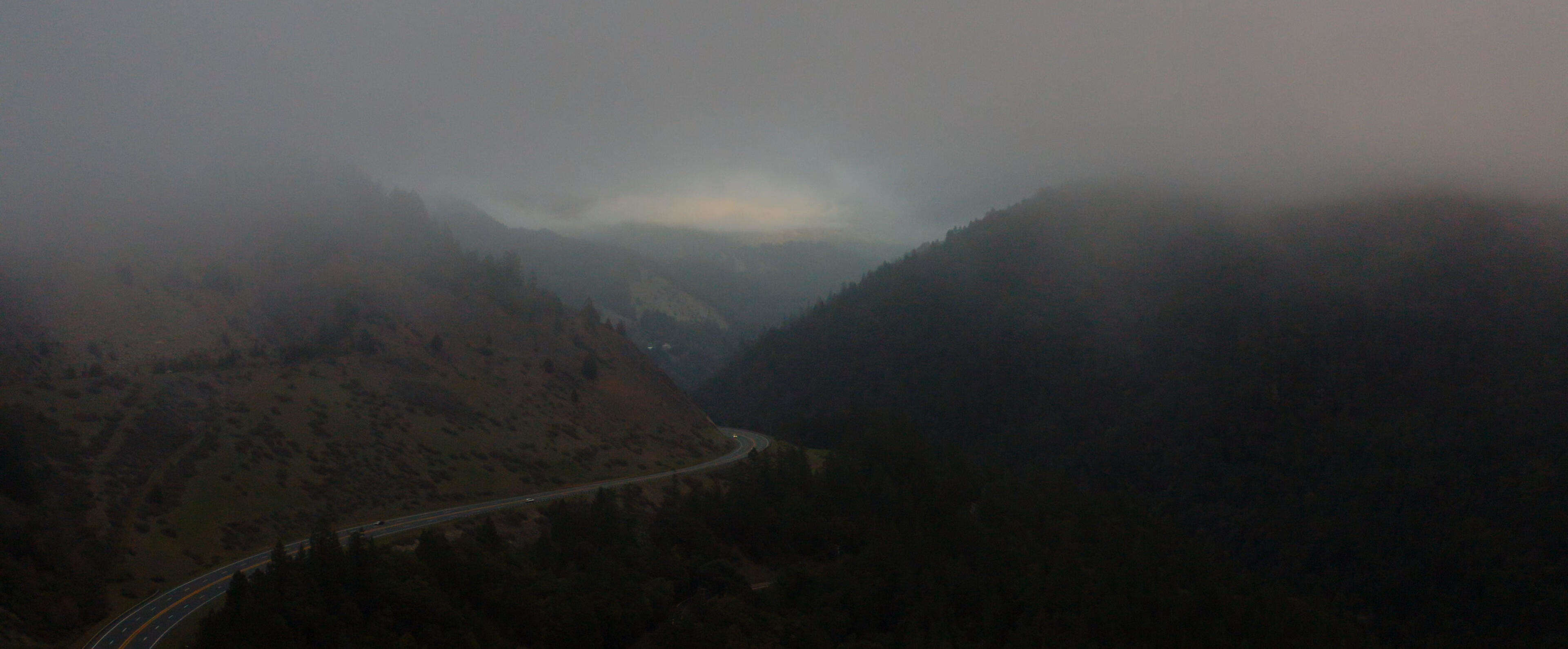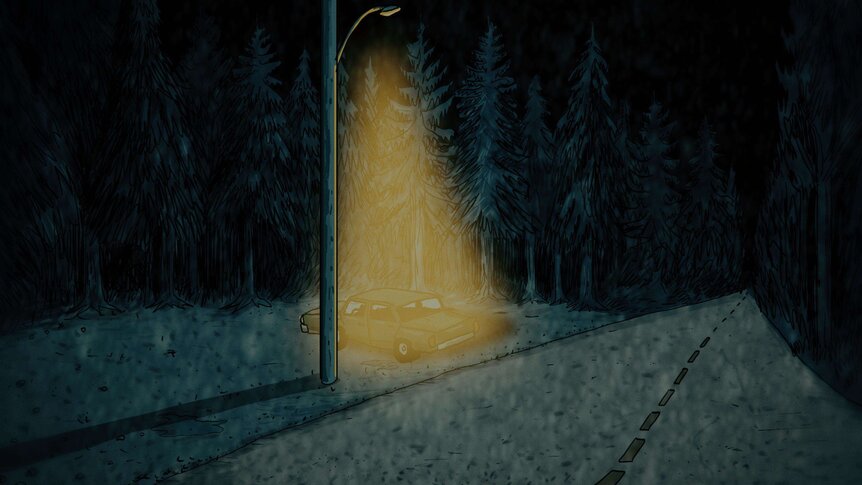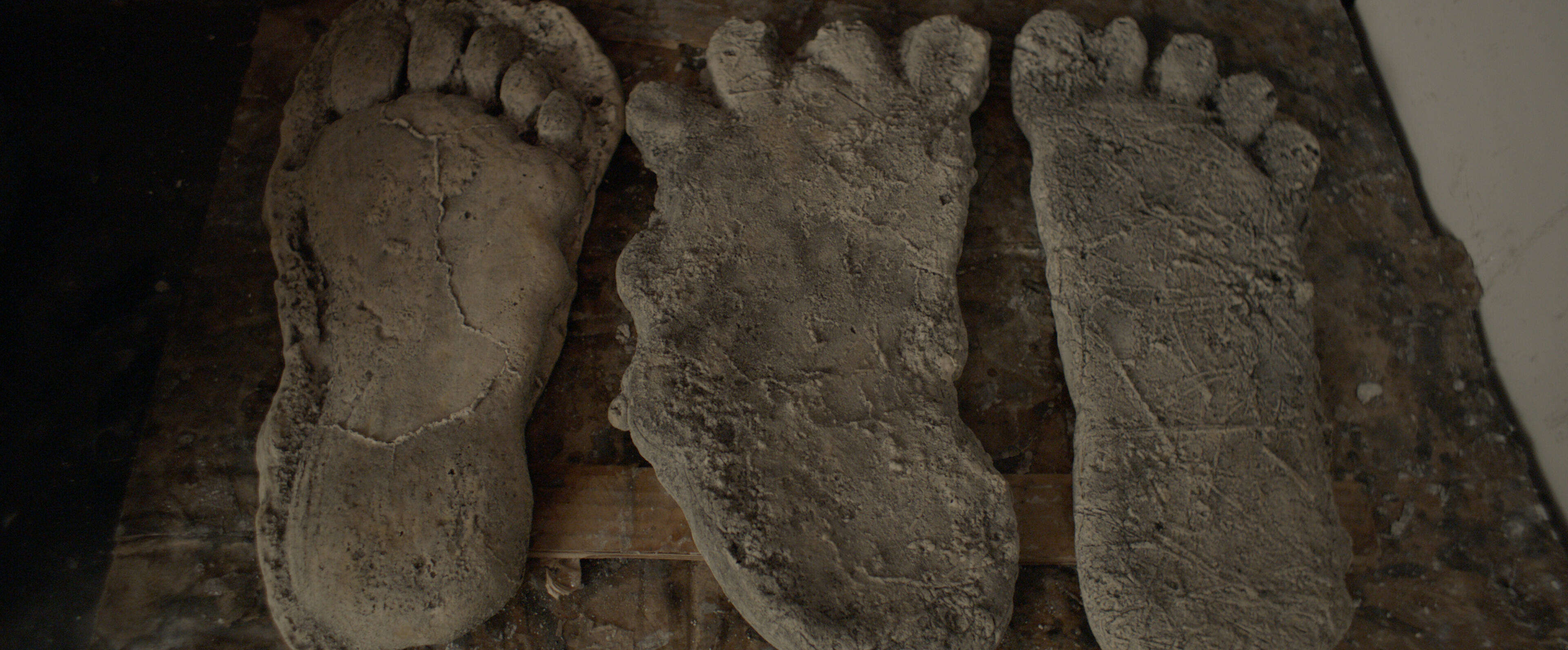Create a free profile to get unlimited access to exclusive videos, sweepstakes, and more!
Hulu's 'Sasquatch' documentary director unpacks the story behind the cryptid with an exclusive clip

Sasquatch, also known as Bigfoot, is one of the better-known cryptids out there. The hairy humanoid monster has stoked fear in the hearts of many who believe they've seen him deep in the woods, particularly in the dark forests of Northern California.
The new Hulu documentary Sasquatch focuses on a particularly harrowing story of how Bigfoot allegedly murdered three men on a Northern California marijuana farm in 1993. The three-part docuseries, directed by Joshua Rofé and produced by the Duplass Brothers, follows investigative journalist David Holthouse as he tries to get to the bottom of this Sasquatch murder myth he heard over 20 years ago.
SYFY WIRE has an exclusive clip from the doc as well as an interview with director Joshua Rofé about his investigation of a cryptid murder mystery. Check out the clip below and read on to hear about Rofé's experience shooting Sasquatch.
How did this particular Sasquatch story come to your attention, and why did you decide to make a documentary on it?
In February of 2018, a friend of mine suggested that I listen to a podcast called Sasquatch Chronicles, where people call in with their encounter stories. I wasn't really interested but he urged me to listen to an episode and I did.
Four days later, I had listened to 11 episodes. What I was struck by was the visceral fear I sensed as a narrative throughline amongst all these people's stories. I was less concerned with, "Do I believe in Bigfoot? Do I believe the details of their stories?" I believe that the fear I was sensing was authentic.
And then I thought, if I was able to find a murder mystery somehow wrapped up in a Sasquatch story, that could be really special. David Holthouse is a friend and colleague of mine — he has been an investigative journalist for 25 years, and he's the person I know that you'd reach out to if you wanted to find a completely insane outlandish thing that probably doesn't exist.
My exact text to David in February 2018 was, "Hey this is the craziest text I'm going to send you for the next five years. I would like to find a murder mystery that's somehow wrapped up in a Sasquatch story, and if it exists pursue that as the next project."
He wrote me right back. He said, "I love it. I got one. I'll call you in five." And then he proceeds to tell me his own story from the fall of 1993, where he heard, while he was visiting a cannabis farm in Northern California, that these three people had been murdered by a Sasquatch. It was that story he tucked away and I think was probably embarrassed to share with other people because it just doesn't sound believable.
The documentary blends tales about Sasquatch with the also very frightening stories around the illegal dope business. How did you approach conveying those two different narratives within the documentary?
It's so easy for those things not to work under the same umbrella. But I think the key is, if you treat that thing that seems super outlandish and implausible like it's as real as somebody testifying in court, then things that might have seemed silly and hard to believe start to veer into compelling territory. The people who have these stories — you sit with them and talk to them, and you know that they believe it. If you treat them with respect, it turns these things that could otherwise be a punchline into something that has gravitas in the moment.
The other thing that jumps out from the documentary is how the forest of the Emerald Triangle is a character in itself. How did the remoteness of that land impact the making of the doc?
Normally whenever I've made a documentary, I go to one town and most everybody lives within 30 minutes of each other that you're going to interview. When you have to do that for an extended period of time, you never feel fully grounded, and that can really allow your anxiety to creep in. There's something about being separate from everyone and everything — you just never feel safe, and you always feel like we better not stay here for too long. And the woods out there, I mean, the forest is so thick. It's just prehistoric.
One thing I found especially interesting is how you used comic book-like vignettes to portray past events. How did you come up with the idea to convey certain elements of the story that way?
I'm glad you say comic book because I always thought of the story as a ‘70s paranoid thriller-meets-graphic novel. We were discussing early on that there's a whole bunch of stuff in this story where there are no visual archives. How were we going to express this? Mark Duplass said, "Well, what about animation?" And my gut reaction was that I wasn't actually very excited about that, because animation and docs for whatever reason had personally never spoken to me.
But then Duplass put us in touch with an animator. His name is Drew Christie, and he had worked on other Duplass Brothers projects. I talked to Drew, and the only thing I told him aside from what the story was about, is that this is like a graphic novel come to life.
A week or two later, Drew sends back about 90 seconds of animation, and I don't think a frame changed in the finished series. He created a world that felt so spot on — Drew gets so much credit for how cinematic certain pockets of the doc got to be.
You also interviewed the people involved with the most famous Bigfoot footage out there, where a Sasquatch is walking through the woods. How did you go about talking with both sides of the people involved in that footage, and then how did you decide to incorporate it into the overall documentary?
We knew for sure that we wanted to talk to Bob Gimlin of the famous Patterson/Gimlin film. When you read anything about the Patterson/Gimlin film, what pops up is another name: Bob Heironimus. He's a guy who claims he was the person wearing the Bigfoot suit in the Patterson/Gimlin film.
I think the best you can hope for when you're making a doc is, if there is a particular story with people who were on opposite ends of it, you really want to talk to both of them. And so that's what we did — we spoke to both these guys who each had very different versions of what that film is. And ironically enough, they happen to live down the street from each other. They both got to say their piece and I found them both to be really compelling. Both great guys too.
How did you approach investigating the illegal dope farming side? It's obviously a bit different and probably a bit scarier, I'm guessing, for you personally, given the people involved.
That's all David Holthouse. My job was to follow him on his investigation at certain points but he's the investigator — he's the one developing these sources. David's skillset as an investigative journalist is really what brought all those things to fruition. He has a really unique set of skills — he's like Gene Hackman out there in the woods, trying to find out what happened.
What do you hope viewers walk away thinking about, once they see the doc?
I hope that they never look at the woods in the same way again. It's not just about Bigfoot — the show isn't about searching for Bigfoot or trying to prove its existence, one way or another. The show is really about the hunt for the origin of this crazy story about Bigfoot murdering three guys on a weed farm.
Hunting for that story was darker and more dangerous than any of us could have imagined in ways that were all completely unexpected. When you start to really dig into folklore or ghost stories, if you really decide you're going to pursue it with a certain amount of vigor and tenacity, I guarantee you will end up in a dark place. It's a scary dangerous world that you can end up in when you start to poke at folklore in a deep enough way.
This interview was edited and condensed for clarity. All three episodes of Sasquatch premiere on Hulu on April 20.
















